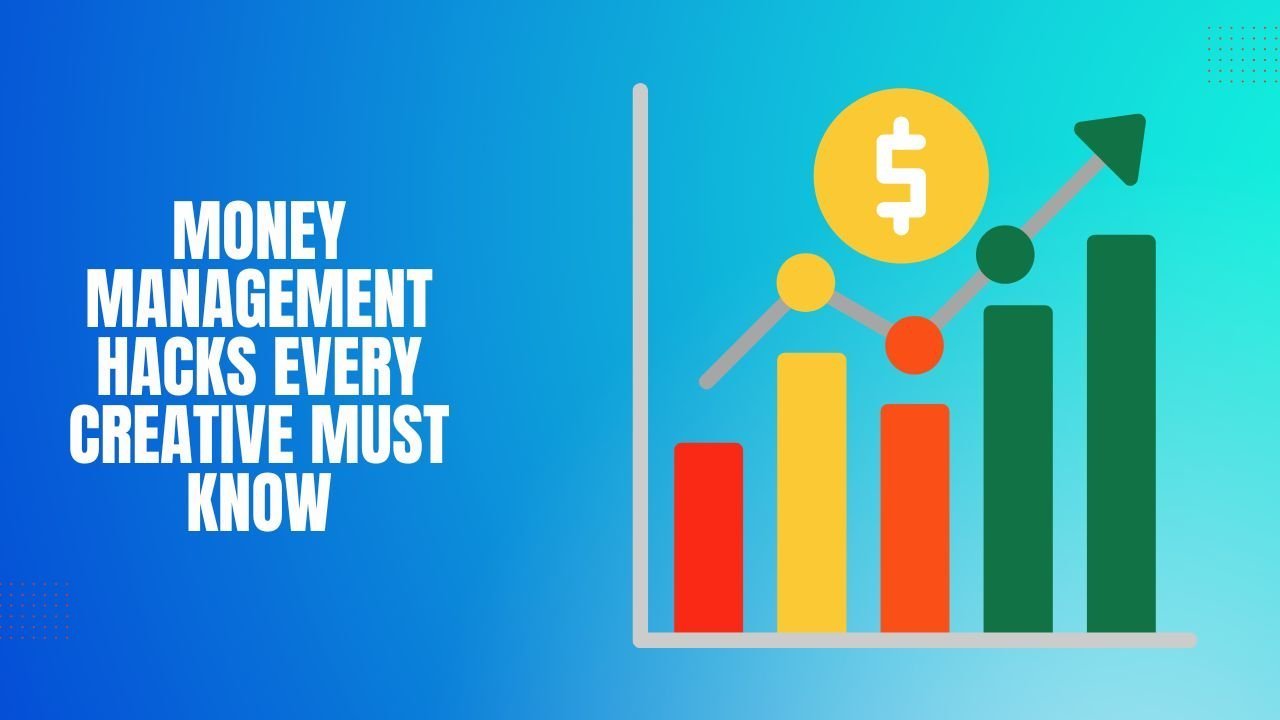Let’s have a heart-to-heart conversation about something crucial to our success in both our artistic endeavors and our financial well-being.
That’s right, we’re diving deep into the world of money management for creatives.
Now, you might be wondering, why is this such an important topic? Well, let me share some eye-opening statistics with you.
According to recent research by Bankrate, a staggering 87% of millennials have admitted to experiencing financial stress.
And as creatives, we often face unique challenges when it comes to managing our money effectively.
But fear not, because I’m here to arm you with 12 game-changing money management hacks that every creative must know.
These aren’t just vague ideas or wishful thinking. These hacks are backed by research, facts, and figures that will empower you to take control of your personal finances and build a solid foundation for your creative career.
You see, as millennials, we have the incredible advantage of living in a digital age where information is at our fingertips.
We can leverage this wealth of knowledge to make informed decisions about our finances and set ourselves up for long-term success.
Whether you’re an artist, a writer, a musician, or any other type of creative, this article is tailor-made for you.
We’ll cover everything from setting clear financial goals and creating a realistic budget to diversifying your income streams and investing for the future.
Here are 12 hacks you can use better manage your money as a creative:
- Set Clear Financial Goals
- Create a Realistic Budget
- Diversify Income Streams
- Embrace Frugal Living
- Manage Debt Effectively
- Build an Emergency Fund
- Invest for the Future
- Prioritize Insurance and Protection
- Negotiate Fair Compensation
- Maximize Tax Benefits
- Seek Professional Financial Guidance
- Continue Financial Education
Together, we’re going to navigate the intricate world of personal finance, debunk myths, and find practical solutions that work specifically for us as creative millennials.
So, buckle up, because we’re about to embark on an exciting journey to financial empowerment and creative freedom.
Let’s dive into these 12 money management hacks and pave the way for our artistic dreams to flourish!
1. Hack 1: Setting Clear Financial Goals

Financial goals provide direction and purpose to your money management efforts.
They help you prioritize your spending, save effectively, and make wise investment decisions.
Research shows that people who set specific financial goals are more likely to achieve them compared to those who don’t.
It’s like having a destination in mind when you embark on a journey.
1.1 Identifying short-term and long-term financial objectives
To set clear financial goals, it’s important to distinguish between short-term and long-term objectives.
Short-term goals typically cover one year or less and can include things like paying off debt, saving for a vacation, or building an emergency fund.
On the other hand, long-term goals are typically set for five years or more and may include buying a house, retiring comfortably, or starting your own business.
Let’s break it down for clarity:
Short-term Financial Goals:
- Paying off debt
- Saving for a vacation
- Building an emergency fund
Long-term Financial Goals:
- Buying a house
- Retiring comfortably
- Starting your own business
1.2 Developing a roadmap to achieve financial goals
Once you’ve identified your financial goals, it’s time to develop a roadmap that will guide you toward achieving them.
Here’s a step-by-step approach:
- Determine your current financial situation: Take stock of your income, expenses, assets, and debts. This will give you a clear picture of where you stand financially.
- Set specific and measurable goals: Make your goals specific, measurable, achievable, relevant, and time-bound (SMART goals). For example, instead of saying “I want to save money,” set a specific target like “I want to save $5,000 in the next 12 months.”
- Break down your goals into actionable steps: Divide your goals into smaller, manageable tasks. For example, if your goal is to save $5,000 in a year, you can break it down into saving $417 per month or approximately $14 per day.
- Create a budget: A budget is a powerful tool that helps you allocate your income effectively and track your expenses. It ensures you’re saving enough to reach your financial goals.
- Explore income-boosting opportunities: Consider ways to increase your income, such as taking on side gigs, freelancing, or investing in your skills. This extra income can accelerate your progress toward your financial goals.
- Monitor your progress and make adjustments: Regularly review your progress and make any necessary adjustments along the way. Life circumstances may change, and it’s important to adapt your roadmap accordingly.
2. Hack 2: Creating a Realistic Budget
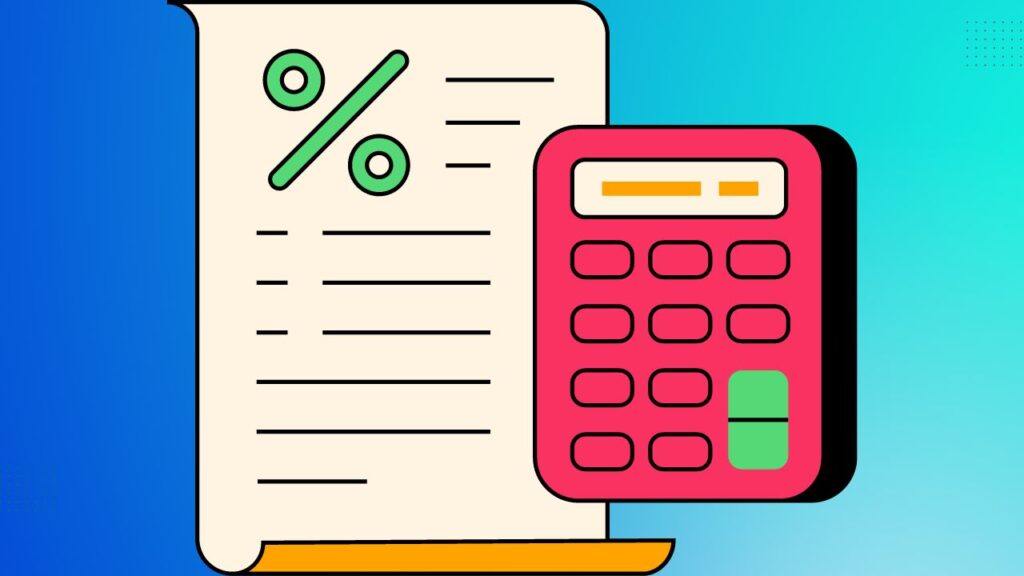
Budgeting is like a financial roadmap that helps you take control of your money.
It allows you to allocate your income effectively, prioritize your expenses, and ensure that you’re saving enough to reach your financial goals.
Research shows that people who budget are more likely to have higher levels of financial well-being and feel more in control of their money.
So, it’s a powerful tool that can transform your financial life.
2.1 Steps to Create an effective budget for creative professionals
Creating a budget doesn’t have to be overwhelming. Follow these steps to craft an effective budget:
- Track your income: Start by calculating your total income from all sources. This can include your salary, freelance gigs, side hustles, or any other creative work that brings in money.
- List your expenses: Make a comprehensive list of all your expenses, both fixed and variable. Fixed expenses are those that remain relatively constant, like rent, utilities, and loan payments. Variable expenses fluctuate from month to month, such as groceries, entertainment, and transportation.
- Differentiate between needs and wants: Differentiate between essential expenses (needs) and discretionary expenses (wants). This will help you prioritize your spending and identify areas where you can cut back if needed.
- Set spending limits: Determine how much you can allocate to each expense category based on your income and financial goals. Be realistic and ensure that your expenses don’t exceed your income.
- Prioritize savings and debt repayment: Make saving and paying off debt a top priority in your budget. Set aside a specific portion of your income for savings and allocate a fixed amount towards debt repayment each month.
- Allow room for unexpected expenses: Life is unpredictable, so it’s important to include a buffer for unexpected expenses in your budget. Aim to build an emergency fund that covers 3-6 months’ worth of living expenses.
2.2 Tips for Tracking and monitoring expenses
Creating a budget is just the first step; you also need to track and monitor your expenses to stay on track.
Here are some handy tips:
- Use budgeting apps: Take advantage of user-friendly budgeting apps like Mint, YNAB (You Need a Budget), or Personal Capital to track your expenses automatically and get a clear overview of your financial situation.
- Save receipts and review regularly: Keep track of your expenses by saving receipts or using digital tools. Set a specific time each week or month to review your spending and adjust your budget if necessary.
- Categorize your expenses: Organize your expenses into categories like groceries, dining out, entertainment, etc. This will help you identify areas where you might be overspending and make necessary adjustments.
- Stay disciplined: Stick to your budget and avoid impulsive spending. Practice self-control and remember the financial goals you’ve set for yourself.
3. Hack 3: Diversifying Income Streams

Exploring multiple avenues of income can provide stability, financial growth, and even open up exciting opportunities.
Relying solely on one source of income can be risky, especially in the ever-changing landscape of creative industries.
By diversifying your income streams, you can mitigate the impact of market fluctuations and create a more stable financial foundation.
According to a recent survey, 61% of millennials have a side hustle to supplement their primary income. So, it’s a trend worth embracing!
3.1 Identifying and capitalizing on additional skills and talents
As a creative professional, you likely possess a range of skills and talents beyond your primary expertise.
It’s essential to identify and capitalize on these additional abilities to create new income opportunities.
Here are some steps to get started:
- Assess your skills: Take an inventory of your skills, both creative and non-creative. Identify areas where you have expertise or a passion that can be monetized.
- Research market demand: Look into the market demand for your additional skills. Identify industries or niches where these skills are highly valued.
- Identify income-generating opportunities: Explore how you can leverage your additional skills. This could include offering freelance services, teaching workshops, selling digital products, or even starting a side business.
3.2 Strategies for Leveraging the gig economy and freelance opportunities
The gig economy and freelance opportunities offer tremendous potential for creative professionals to diversify their income streams.
Here are some strategies to make the most of these opportunities:
- Freelancing platforms: Sign up for popular freelancing platforms like Upwork, Fiverr, or Freelancer.com. These platforms connect you with clients seeking creative services, giving you a chance to showcase your skills and earn money.
- Network and referrals: Leverage your professional network and ask for referrals. Word-of-mouth recommendations can lead to new freelance projects and collaborations.
- Develop a personal brand: Build your personal brand through social media, a professional website, or a portfolio. This will attract potential clients and help you stand out in the crowded creative industry.
- Diversify your services: Offer a range of creative services to appeal to a broader client base. For example, if you’re a graphic designer, consider offering logo design, social media graphics, and website design services.
- Collaborate and cross-promote: Partner with other creatives or businesses to collaborate on projects or cross-promote each other’s work. This expands your reach and can lead to new income opportunities.
- Continuous skill development: Invest in continuous learning and skill development to stay ahead in the competitive creative industry. Develop new techniques, explore emerging trends, and expand your knowledge base.
4. Hack 4: Embracing Frugal Living

Embracing a frugal lifestyle doesn’t mean sacrificing your creativity or missing out on the things you love.
In fact, it can be a powerful way to save money and take control of your finances.
So, let’s explore the benefits, practical tips, and mindful spending habits of frugal living!
4.1 Benefits of a frugal lifestyle
Living frugally offers numerous benefits that go beyond just saving money. It can:
- Increase financial stability: By spending less and saving more, you build a stronger financial foundation and have a safety net for emergencies.
- Reduce financial stress: When you’re not burdened by excessive debt or living paycheck to paycheck, you experience less stress and anxiety related to money.
- Foster creativity and resourcefulness: Embracing a frugal lifestyle encourages you to think outside the box, find creative solutions, and make the most of what you have.
- Support long-term financial goals: Saving money through frugal living allows you to invest for the future, achieve your financial goals faster, and enjoy financial freedom.
4.2 Practical Tips for saving money without sacrificing creativity
Living frugally doesn’t mean giving up your creative passions.
Here are some practical tips to save money while still embracing your creativity:
- DIY projects: Engage in do-it-yourself (DIY) projects to create personalized, unique items instead of buying expensive ones. It’s a great way to save money while expressing your creativity.
- Thrifting and secondhand shopping: Explore thrift stores, consignment shops, and online platforms for secondhand treasures. You can find great deals on art supplies, props, clothing, and more.
- Borrow and share resources: Instead of purchasing expensive equipment or tools, consider borrowing or sharing with friends or fellow creatives. This helps reduce costs and build a supportive community.
- Take advantage of free resources: Tap into free resources like libraries, online tutorials, open-source software, and free events to enhance your skills and expand your creative horizons.
4.3 Incorporating mindful spending habits into daily life
Mindful spending is a key aspect of frugal living. It involves being intentional and conscious about where your money goes.
Here are some habits to incorporate into your daily life:
- Plan your purchases: Before making a purchase, take a moment to evaluate whether it aligns with your values and financial goals. Avoid impulsive buying and give yourself time to consider your options.
- Practice the 24-hour rule: When you feel the urge to buy something non-essential, wait for 24 hours. This helps you distinguish between impulsive desires and genuine needs.
- Track your expenses: Keep a record of your expenses to identify patterns, track your progress, and make necessary adjustments to your budget.
- Set spending limits: Establish spending limits for various categories and stick to them. This helps prevent overspending and ensures you stay within your budget.
- Prioritize quality over quantity: Instead of buying multiple low-quality items, invest in high-quality, durable products that will last longer and provide better value in the long run.
5. Hack 5: Managing Debt Effectively
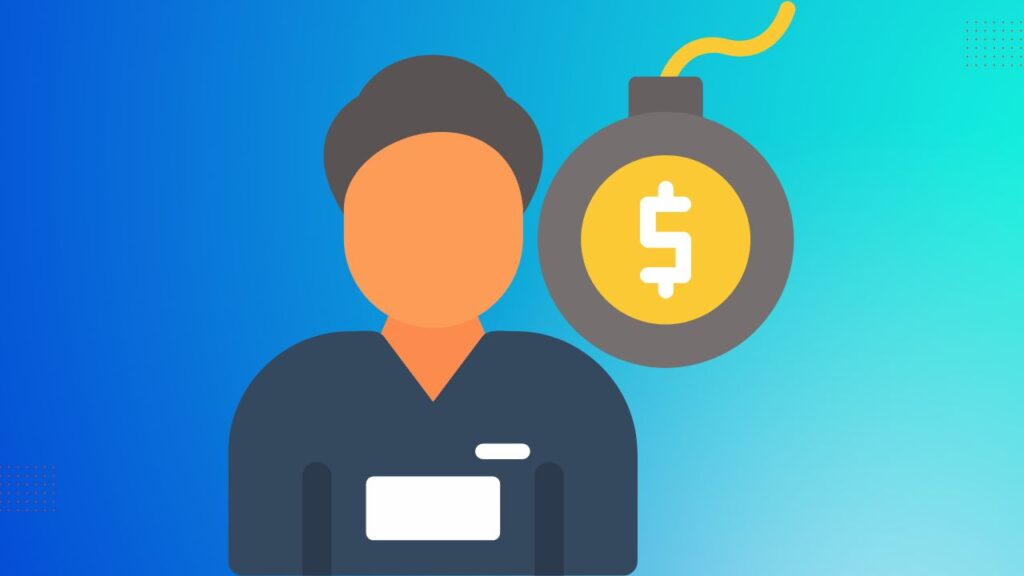
Debt can be a real burden, but with the right strategies, you can take control of your finances and pave the way to a debt-free future.
Let’s get started!
5.1 Assessing and prioritizing different types of debt
When it comes to managing debt, it’s crucial to assess and prioritize the various types of debt you may have.
Here’s a table to help you categorize your debts and understand which ones require immediate attention:
| Type of Debt | Interest Rate | Priority Level |
| Credit Card Debt | 20% – 30% | High |
| Student Loans | 4% – 7% | Medium |
| Personal Loans | 8% – 15% | Medium |
| Mortgage | 3% – 5% | Low |
By analyzing the interest rates and priority levels, you can focus your efforts on tackling high-priority debts first.
This will save you money in the long run by reducing the amount of interest you’ll have to pay.
5.2 Strategies for debt repayment and Consolidation
Now that you know which debts to prioritize, let’s explore some effective strategies for debt repayment and consolidation.
Here are a few options to consider:
- Snowball Method: Start by paying off the smallest debt while making minimum payments on other debts. Once the smallest debt is paid off, roll that payment into the next smallest debt. This approach provides a psychological boost as you see quick wins.
- Avalanche Method: Prioritize debts with the highest interest rates first. Pay minimum payments on other debts while putting extra money towards the debt with the highest interest. Once that debt is paid off, move on to the next highest-interest debt.
- Debt Consolidation: If you have multiple high-interest debts, consolidating them into a single loan or credit card with a lower interest rate can simplify your repayment process and potentially save you money. Make sure to compare rates and terms before opting for consolidation.
5.3 Avoiding common debt traps and Pitfalls
As you navigate your debt repayment journey, it’s important to steer clear of common debt traps and pitfalls that can hinder your progress.
Here are some key things to keep in mind:
- Avoid taking on more debt: While it may be tempting to rely on credit cards or loans to fund your creative projects, try to minimize new debt. Focus on generating income through your creative pursuits and maintain a budget to stay on track.
- Track your spending: Keeping tabs on your expenses is crucial for effective debt management. Create a monthly budget and use tools like budgeting apps or spreadsheets to track your income and expenses. This will help you identify areas where you can cut back and save more towards debt repayment.
- Build an emergency fund: Unexpected expenses can derail your debt repayment plans. Aim to build an emergency fund with three to six months’ worth of living expenses. This will provide a safety net and prevent you from falling back into debt when unforeseen circumstances arise.
Remember, managing debt effectively requires discipline, perseverance, and a solid plan.
By assessing and prioritizing your debts, utilizing repayment strategies, and avoiding common debt traps, you’ll be well on your way to achieving financial freedom.
6. Hack 6: Building an Emergency Fund

Life is full of surprises, and having a financial safety net is crucial for weathering unexpected expenses or income gaps.
So, let’s dive in and learn how to establish and grow your emergency fund!
6.1 The importance of having a financial safety net
Having an emergency fund is like having a financial cushion to fall back on when life throws curveballs your way.
Here’s why it’s so important:
- Unexpected expenses: Whether it’s a sudden medical bill, car repair, or home maintenance issue, emergencies can happen at any time. Without a safety net, you might find yourself relying on credit cards or loans, which can lead to more debt.
- Income gaps: As a creative, your income may be irregular or fluctuate from month to month. During periods of low income or when you’re transitioning between projects, having an emergency fund allows you to cover your living expenses without the stress of falling behind on bills.
6.2 Setting aside funds for unexpected expenses or income gaps
Now that you understand the importance, let’s discuss how to set aside funds for your emergency fund.
Here are some key tips:
- Start small: Begin by setting aside a small portion of your income, even if it’s just a few dollars per week. The key is to make it a habit and consistently contribute to your emergency fund.
- Automate savings: Make it easier on yourself by automating regular transfers from your checking account to your emergency fund. Set up an automatic transfer on payday, so you don’t even have to think about it.
- Treat it as a priority: Consider your emergency fund as a necessary bill to pay yourself first. Just like you prioritize paying rent or utilities, prioritize saving for your emergency fund.
6.3 Tips for Establishing and Growing an Emergency Fund
Let’s explore some additional tips to help you establish and grow your emergency fund effectively:
- Set a goal: Determine how much you want to save in your emergency fund. Start with a realistic target, such as three to six months’ worth of living expenses, and gradually work your way up.
- Cut expenses: Look for areas where you can trim your budget to free up extra money for your emergency fund. It could be reducing discretionary spending, negotiating bills, or finding ways to save on everyday expenses.
- Maximize windfalls: Whenever you receive unexpected income, such as a tax refund, bonus, or freelance gig, consider allocating a portion of it towards your emergency fund. This allows you to accelerate your savings progress.
- Keep it separate: Open a separate savings account specifically for your emergency fund. This separation helps you avoid dipping into the funds for non-emergency purposes and keeps your financial safety net intact.
Remember, building an emergency fund takes time and discipline, but it’s an essential part of financial stability.
By setting aside funds for unexpected expenses or income gaps, you’ll gain peace of mind and be better prepared for whatever comes your way.
7. Hack 7: Investing for the Future

Investing is an excellent way to grow your wealth over time and secure a brighter financial future.
Let’s explore some investment options suitable for creatives, understand the basics of stocks, bonds, and mutual funds, and even dive into alternative investment opportunities for diversification.
7.1 Investment options suitable for Creatives
When it comes to investing, creatives have unique considerations.
Here are some investment options that align well with the creative lifestyle:
- Stocks: Investing in individual stocks allows you to become a partial owner of a company. Research companies in creative industries, such as entertainment, technology, or fashion, and consider investing in those that align with your interests and expertise.
- Bonds: Bonds are fixed-income securities where you lend money to governments or corporations in exchange for regular interest payments and the return of principal. Consider investing in bonds issued by companies involved in creative projects or municipalities supporting the arts.
- Mutual Funds: Mutual funds pool money from multiple investors to invest in a diversified portfolio of stocks, bonds, or other assets. Look for mutual funds focused on creative sectors or socially responsible investing that aligns with your values.
7.2 Basics of Stocks, Bonds, and Mutual Funds
Now, let’s dive into the basics of stocks, bonds, and mutual funds to help you make informed investment decisions:
Stocks:
- Stocks represent ownership in a company and can offer long-term growth potential.
- Research companies, evaluate their financials, and consider their industry outlook before investing.
- Understand that stock prices can be volatile and fluctuate based on market conditions and company performance.
Bonds:
- Bonds are debt securities where you lend money to a borrower in exchange for interest income.
- Bonds are generally considered safer than stocks but offer lower potential returns.
- Research the creditworthiness of the issuer and understand the bond’s maturity and interest rate before investing.
Mutual Funds:
- Mutual funds pool money from multiple investors to invest in a diversified portfolio.
- Look for funds with low fees, a solid track record, and a manager experienced in the creative sector.
- Diversification helps reduce risk by spreading investments across various assets.
7.3 Exploring Alternative Investment Opportunities for Diversification
Diversification is key to reducing investment risk.
Here are some alternative investment opportunities to consider:
- Real Estate Investment Trusts (REITs): REITs allow you to invest in real estate without the need for direct ownership. They generate income through rental properties, providing potential diversification and passive income.
- Peer-to-Peer Lending: This type of investment involves lending money to individuals or businesses through online platforms. It can provide higher interest rates compared to traditional savings accounts but comes with risks, so thorough research is essential.
- Collectibles: If you have a passion for art, antiques, or other collectibles, you can invest in these assets for potential appreciation over time. However, be mindful of the associated risks and do your due diligence.
Remember, investing requires careful consideration and a long-term mindset.
Do thorough research, consult with a financial advisor if needed, and diversify your investments to manage risk effectively.
8. Hack 8: Prioritizing Insurance and Protection
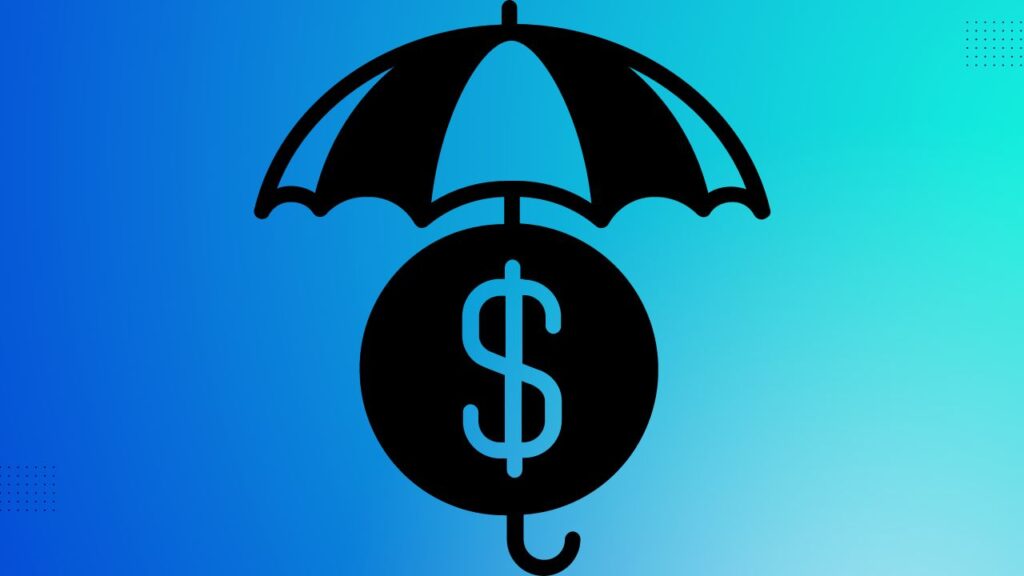
Insurance plays a crucial role in financial planning, and as a creative, it’s essential to understand the types of coverage you need and how to find affordable options.
Let’s dive in!
8.1 Role of Insurance in Financial Planning
Insurance is like a safety net that protects you from unexpected events that could derail your financial progress.
Here’s why insurance is essential:
- Risk management: Insurance helps manage the financial risks associated with unforeseen events, such as accidents, illnesses, or property damage. It provides financial protection and peace of mind.
- Asset protection: Insurance safeguards your valuable assets, such as your equipment, studio space, or intellectual property. It ensures you have the means to recover or replace them if they are damaged or stolen.
- Liability coverage: As a creative, you may interact with clients, collaborate with others, or have public exposure. Liability insurance protects you from legal claims or lawsuits arising from accidents, negligence, or copyright infringement.
8.2 Types of Insurance Coverage Essential for Creatives
Now, let’s explore some types of insurance coverage that are particularly important for creatives.
Take a look at this table to understand the key types of insurance you should consider:
| Type of Insurance | Coverage Provided |
| Health Insurance | Medical expenses, hospitalization |
| Disability Insurance | Income protection if unable to work |
| Property Insurance | Protection for equipment, studio |
| Liability Insurance | Legal protection from lawsuits |
8.3 Tips for Finding Affordable Insurance Options
Insurance costs can vary, but here are some tips to help you find affordable options without compromising on coverage:
- Shop around: Get quotes from multiple insurance providers to compare prices and coverage. Don’t settle for the first option you come across.
- Bundle policies: Consider bundling multiple insurance policies, such as home and auto insurance, with the same provider. This often leads to discounts and lower overall premiums.
- Increase deductibles: Opting for higher deductibles on insurance policies, such as property or health insurance, can lower your monthly premiums. Just make sure you have enough savings to cover the deductible if an incident occurs.
- Professional organizations: Check if there are professional organizations or associations in your creative field that offer group insurance plans. These plans may have more favorable rates due to the collective bargaining power of the group.
- Seek expert advice: Consult with an insurance agent or financial advisor who specializes in insurance to help you navigate the options and find the best coverage at a reasonable cost.
Remember, insurance is an investment in your financial security.
Assess your needs, consider the risks you face as a creative, and make informed decisions to protect yourself and your assets.
9. Hack 9: Negotiating Fair Compensation

As a creative professional, it’s crucial to advocate for your worth and ensure you’re being paid what you deserve.
Let’s explore some strategies, tips, and tricks to help you navigate this process effectively.
9.1 Strategies for Advocating for fair pay as a creative professional
Know your value: Before entering any negotiation, it’s essential to understand your own value in the market.
Research similar roles and positions to gauge what others in your field are earning.
Keep in mind factors such as your experience, skills, and the demand for your work.
Highlight your accomplishments: Prepare a list of your achievements, successful projects, and unique skills that set you apart from others.
By showcasing your track record and expertise, you’ll have a strong case for demanding fair compensation.
Emphasize the value you bring: Clearly communicate the impact you can make for the employer or client.
Demonstrate how your creative talents can contribute to their goals, whether it’s improving their brand image, increasing sales, or enhancing their overall customer experience.
Be confident but realistic: While it’s important to advocate for yourself, it’s equally crucial to be realistic in your expectations.
Aim for fair compensation based on market rates and industry standards, considering factors like your experience level and the complexity of the project or job.
9.2 Researching market rates and industry standards
Explore salary databases: Look for reputable sources like industry-specific websites, professional associations, or government reports that provide salary information for creative professionals.
Websites like Glassdoor and Payscale can also give you insights into the average pay range for your role.
Network and gather insights: Connect with other professionals in your field, attend industry events, or join online communities to gain insights into current market rates and industry standards.
By engaging with peers, you can learn from their experiences and adjust your expectations accordingly.
Consider regional variations: Keep in mind that salary ranges can vary based on your location.
The cost of living, demand for creative professionals, and local industry standards may influence compensation levels.
Research regional differences to ensure your negotiation aligns with the market realities in your area.
Here’s a table summarizing some common creative roles and their average salaries in the United States according to industry reports:
| Creative Role | Average Salary (USD) |
| Graphic Designer | $50,370 |
| Copywriter | $63,200 |
| Art Director | $94,220 |
| UX Designer | $97,460 |
| Video Editor | $63,780 |
| Photographer | $40,280 |
| Web Developer | $77,200 |
9.3 Tips for effective negotiation and contract management
Be prepared: Before entering any negotiation, do thorough research, gather supporting evidence, and anticipate potential objections or counteroffers.
Being well-prepared will boost your confidence and help you navigate the negotiation process smoothly.
Practice active listening: During the negotiation, actively listen to the other party’s concerns and perspectives.
This demonstrates your willingness to find a mutually beneficial solution.
By understanding their needs, you can tailor your negotiation strategy accordingly.
Negotiate beyond salary: While salary is crucial, don’t forget to consider other aspects of compensation.
Additional benefits, such as healthcare, retirement plans, paid time off, flexible work arrangements, or professional development opportunities, can add significant value to your overall package.
Get everything in writing: Once you reach an agreement, it’s essential to have a written contract that clearly outlines the terms and conditions of your compensation. This ensures both parties are on the same page
10. Hack 10: Maximizing Tax Benefits
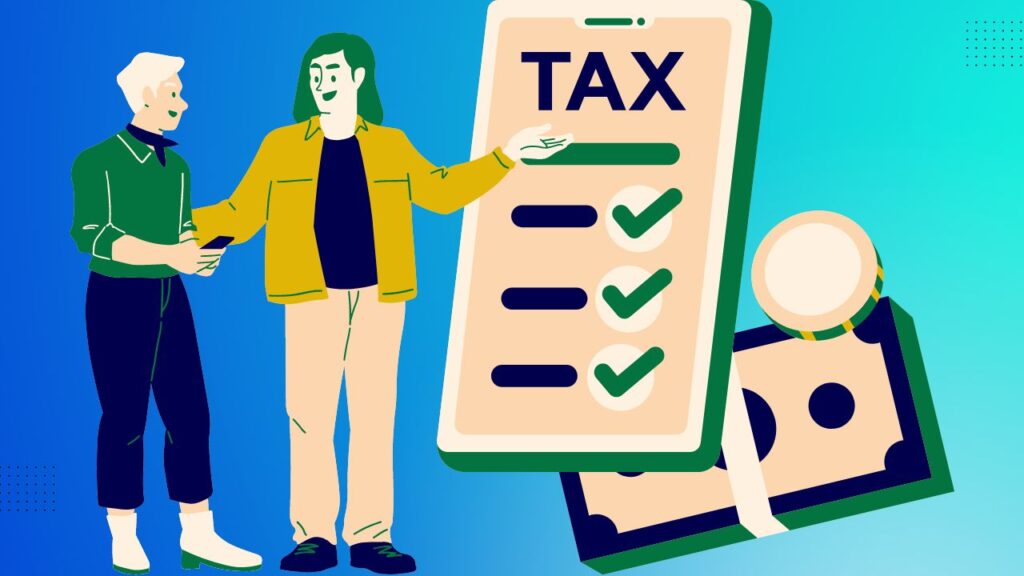
As a creative professional, you have unique opportunities to take advantage of deductions and credits that can help you save money on taxes.
Let’s dive into the strategies and tips to make the most of these tax benefits.
10.1 Tax Deductions and Credits Relevant to Creatives
Home office deduction: If you use a portion of your home exclusively for your creative work, you may be eligible for a home office deduction.
This allows you to deduct a portion of your rent or mortgage interest, utilities, and other expenses related to your home office setup.
Business expenses: As a creative professional, you likely have various business expenses, such as art supplies, software subscriptions, professional development courses, or equipment.
Keep track of these expenses, as they can be deducted from your taxable income, reducing your overall tax liability.
Self-employment deductions: If you’re a freelancer or independent contractor, you can deduct self-employment taxes, health insurance premiums, retirement contributions, and other expenses related to running your business.
These deductions can significantly lower your taxable income.
Education and training credits: If you invest in your creative skills through workshops, courses, or conferences, you may be eligible for education and training credits.
The Lifetime Learning Credit and the American Opportunity Credit are examples of credits that can offset the cost of your education expenses.
10.2 Keeping track of business expenses and maintaining proper documentation
Use dedicated financial tools: Consider using accounting software or apps to keep track of your business expenses.
These tools can help you categorize expenses, generate reports, and simplify tax preparation. QuickBooks, FreshBooks, or Wave are popular options.
Maintain proper documentation: It’s crucial to keep receipts, invoices, and any relevant documentation for your business expenses.
This includes physical copies as well as digital records.
Proper documentation ensures you have evidence to support your deductions if the IRS ever requests it.
Separate business and personal finances: To simplify expense tracking, maintain separate bank accounts and credit cards for your business and personal finances.
This separation makes it easier to identify and record business expenses accurately.
10.3 Seeking advice from tax professionals to optimize tax benefits
Consult a tax professional: Taxes can be complex, so it’s wise to seek advice from a tax professional who specializes in working with creative professionals.
They can help you identify additional deductions or credits you may have overlooked and ensure you’re taking full advantage of all available tax benefits.
Plan ahead for tax season: By working with a tax professional throughout the year, you can proactively plan your financial activities to maximize your tax benefits.
They can guide you on estimated tax payments, retirement contributions, and other strategies to optimize your tax situation.
According to the IRS Statistics of Income Bulletin, the average total deductions claimed by self-employed individuals in arts, entertainment, and recreation industries were $14,364, providing substantial tax savings.
Remember, maximizing your tax benefits requires careful planning, proper documentation, and professional guidance.
By understanding the deductions and credits relevant to creatives and staying organized throughout the year, you can minimize your tax burden and keep more of your hard-earned money in your pocket.
11. Hack 11: Seeking Professional Financial Guidance

When it comes to managing your money, working with financial advisors and experts can be a game-changer.
Let’s explore why, how to find the right professionals, and when it’s the right time to seek their help.
11.1 Why Work with Financial Advisors and Experts
Expertise and knowledge: Financial advisors have specialized knowledge and expertise in various aspects of personal finance.
They can help you navigate complex financial situations, provide tailored advice, and offer strategies that align with your unique goals and circumstances.
Objective and unbiased advice: A financial advisor acts as a neutral party, providing objective advice based on your best interests.
They can help you make sound financial decisions without being influenced by emotions or biases that can cloud your judgment.
Comprehensive financial planning: Financial advisors can assist you in creating a holistic financial plan that covers various areas, such as budgeting, investments, retirement planning, tax strategies, and risk management.
They take a comprehensive view of your financial life to ensure all aspects are addressed.
Accountability and guidance: Working with a financial advisor provides accountability.
They help you stay on track with your financial goals, provide guidance during uncertain times, and adjust your plan as needed.
11.2 Finding suitable financial professionals with expertise in the creative industry
Seek recommendations: Ask fellow creatives or professionals in your industry for recommendations.
They may have experience working with financial advisors who understand the specific challenges and opportunities faced by creatives.
Research credentials and expertise: Look for financial advisors who have experience working with clients in the creative industry or who specialize in serving millennials.
Check their credentials, certifications, and memberships in professional organizations like the Certified Financial Planner (CFP) Board.
Evaluate their approach and philosophy: Every financial advisor has their own approach and philosophy.
Look for someone whose values align with yours and who takes the time to understand your unique circumstances and goals.
Consider fee structures: Financial advisors may charge fees based on a percentage of assets managed, an hourly rate, or a flat fee.
Consider the fee structure and ensure it aligns with your budget and the services you require.
11.3 When and how to seek professional financial guidance
Early in your career: It’s never too early to start working with a financial advisor.
Seeking guidance early on can help you establish a solid financial foundation, make informed decisions, and set yourself up for long-term success.
Major life events: Consider seeking professional financial guidance during significant life events, such as starting a business, getting married, having children, or planning for retirement.
These transitions often require careful financial planning and can benefit from expert advice.
Periodic check-ins: Regularly reassess your financial situation and goals.
If you’re unsure about certain aspects or need guidance on specific financial decisions, reaching out to a financial advisor for a periodic check-in can provide valuable insights.
Did you know that a study by Vanguard found that working with a financial advisor can potentially add about 3% in net returns over time compared to those who don’t seek professional advice?
12. Hack 12: Continuing Financial Education

When it comes to money management, staying informed and continuously learning can have a significant impact on your financial success.
Let’s explore why it’s important, where to find resources, and how to connect with fellow creatives for financial insights.
12.1 The importance of staying informed about personal finance
Empowerment and control: By staying informed about personal finance, you gain the knowledge and tools to make informed decisions and take control of your financial future.
It empowers you to navigate financial challenges and seize opportunities with confidence.
Adapting to changes: The financial landscape is ever-evolving. Staying informed allows you to adapt to changes in tax laws, investment trends, and economic conditions, ensuring your financial strategies remain relevant and effective.
Building a strong foundation: Financial education helps you build a strong foundation for your money management skills.
It equips you with the knowledge of budgeting, saving, investing, debt management, and risk mitigation, setting you up for long-term financial success.
12.2 Exploring Resources and Tools for ongoing financial education
Books and publications: There’s a wealth of personal finance books and publications available that cater to various levels of knowledge and interests.
Popular titles include “The Total Money Makeover” by Dave Ramsey, “Rich Dad Poor Dad” by Robert Kiyosaki, and “The Intelligent Investor” by Benjamin Graham.
Online courses and webinars: Many platforms offer online courses and webinars on personal finance topics.
Websites like Coursera, Udemy, and Khan Academy provide affordable or even free courses on budgeting, investing, retirement planning, and more.
Podcasts and YouTube channels: Engage with personal finance podcasts and YouTube channels that offer valuable insights and advice.
Podcasts like “The Dave Ramsey Show” and “ChooseFI” cover a wide range of personal finance topics, while YouTube channels like “Graham Stephan” and “The Financial Diet” provide practical tips and strategies.
Personal finance blogs: Follow popular personal finance blogs that cater to millennials and creatives.
Blogs like “The Penny Hoarder,” “Millennial Money,” “Money Mastery Millennial”, and “The Financial Diet” offer a wealth of articles and resources to help you enhance your financial literacy.
12.3 Joining communities and networking with fellow creatives for financial insights
Online forums and communities: Engage with online forums like Reddit’s personal finance subreddit or specific communities for creatives.
These platforms provide opportunities to ask questions, seek advice, and learn from the experiences of others.
Networking events and workshops: Attend networking events, workshops, and conferences specifically focused on personal finance or tailored to creatives.
These events not only provide educational opportunities but also allow you to connect with like-minded individuals who share similar financial goals and challenges.
Social media groups: Join social media groups or follow pages dedicated to personal finance for millennials or creatives.
Platforms like Facebook and LinkedIn host various communities where you can connect with others, share insights, and learn from each other’s financial journeys.
Did you know that according to a study by the Financial Industry Regulatory Authority (FINRA), individuals who actively pursue financial education and engage in financial discussions are more likely to make positive financial decisions?
Remember, continuing your financial education is an investment in yourself and your future.
By exploring resources, staying informed, and connecting with fellow creatives, you can continually enhance your money management skills and make informed financial choices.
Bottom Line…
In conclusion, these twelve money management hacks are essential for creative millennials looking to achieve financial success.
By tracking expenses, diversifying income, building emergency funds, and investing wisely, you’ll be on the path to financial stability.
Don’t forget the importance of self-care and continuous learning about personal finance.
With these strategies in place, you’ll be well-equipped to unleash your creative potential while securing a solid financial foundation.
So, go ahead and take charge of your finances—your creative dreams and financial future are within reach!
